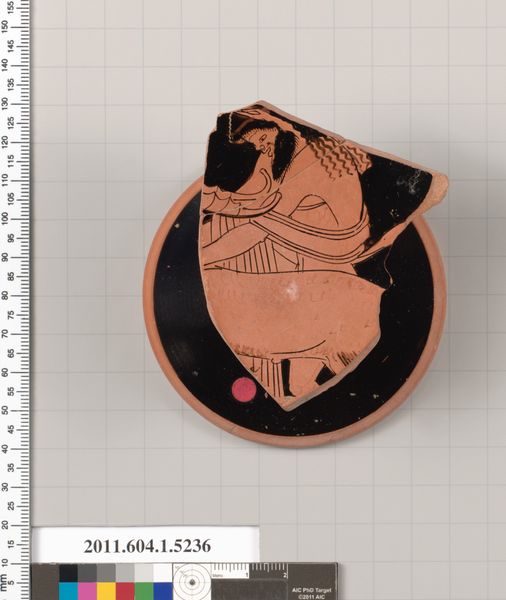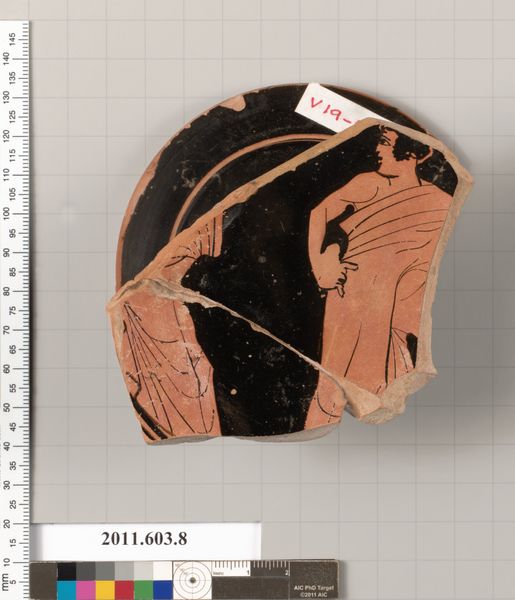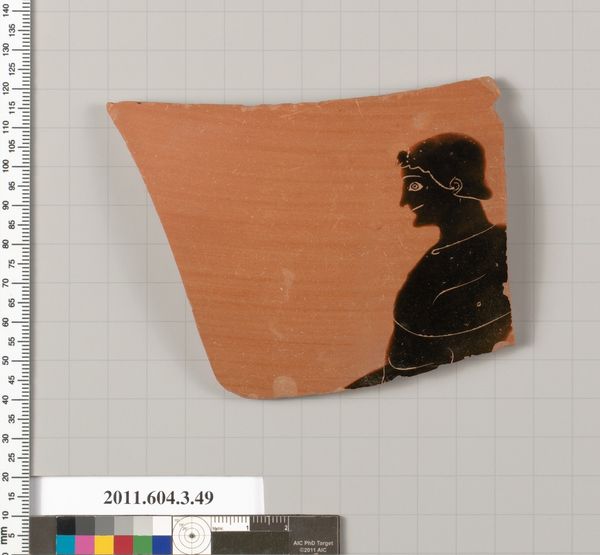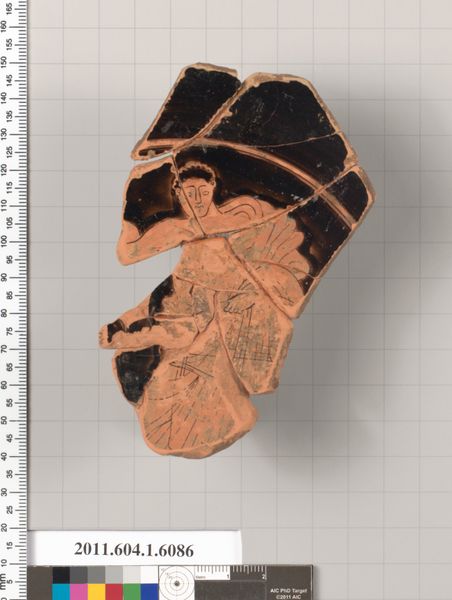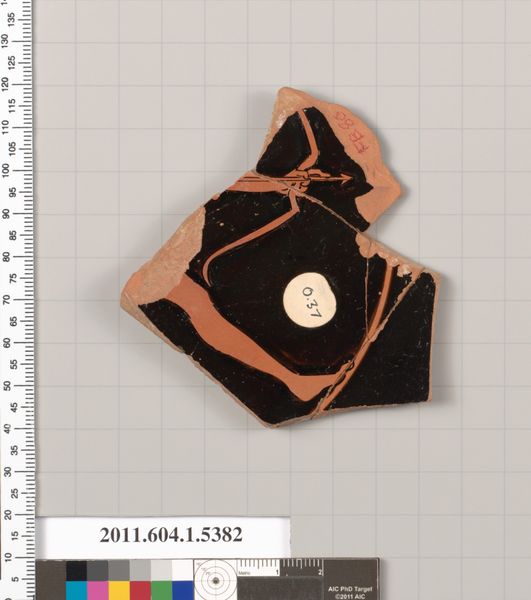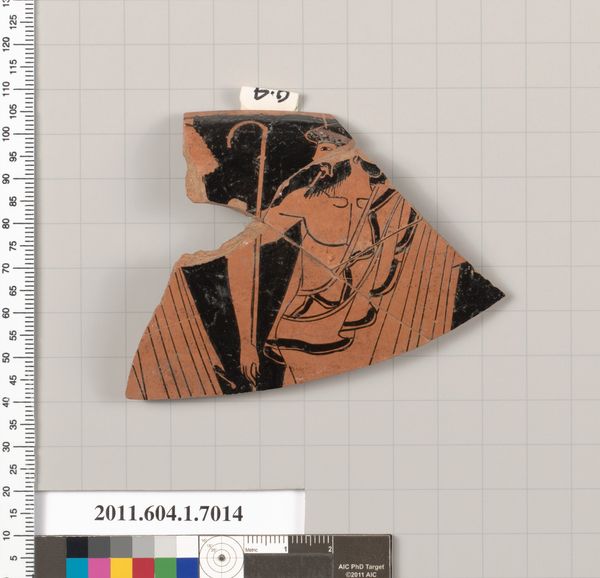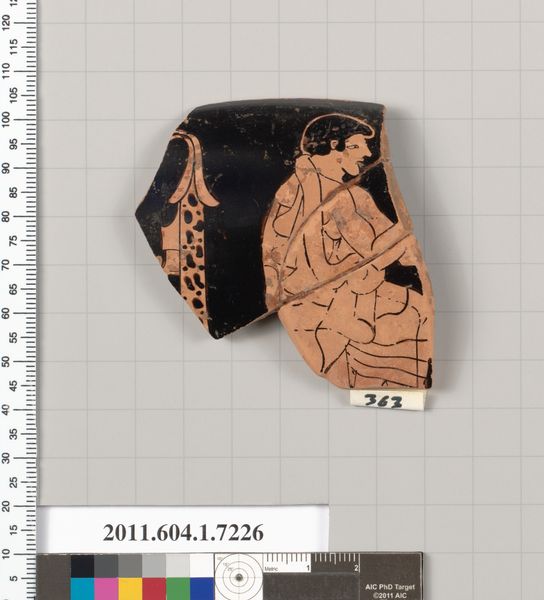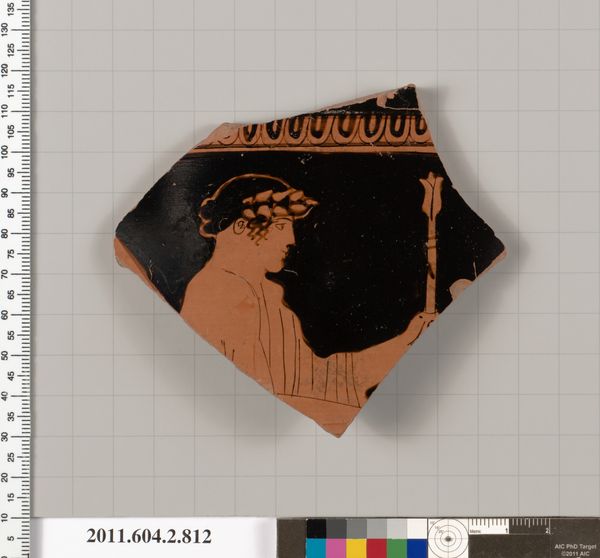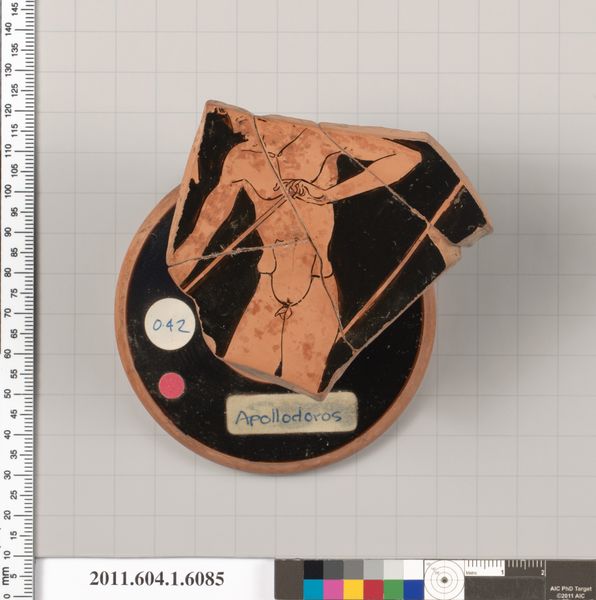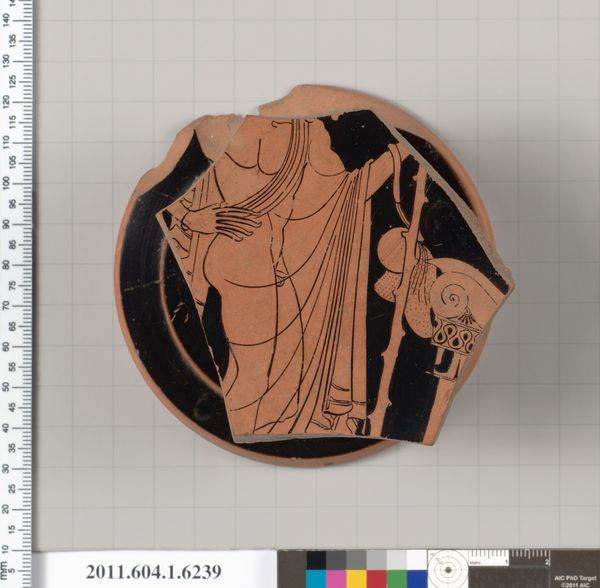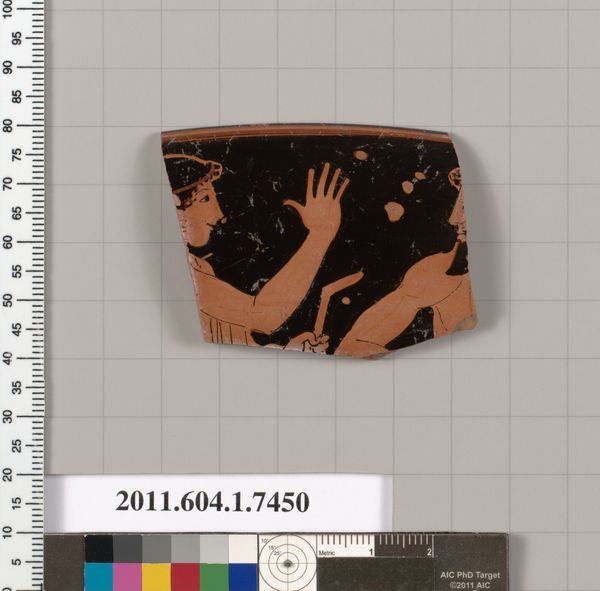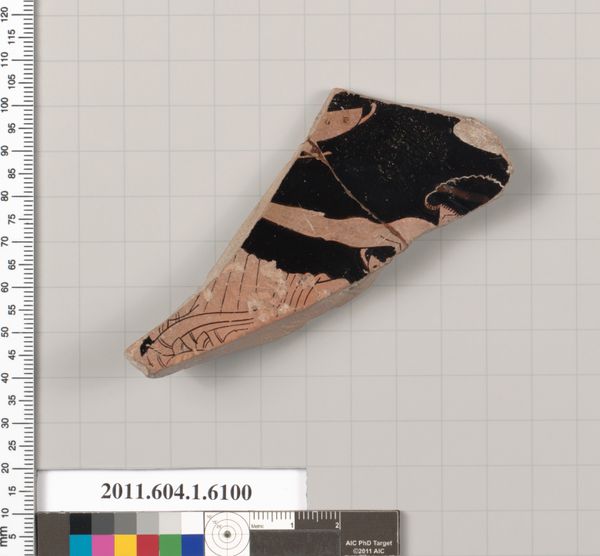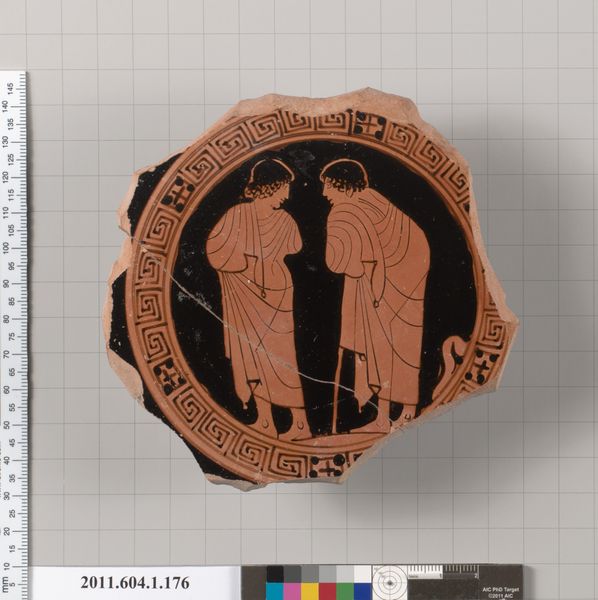
drawing, earthenware
#
portrait
#
drawing
#
greek-and-roman-art
#
figuration
#
earthenware
#
ancient-mediterranean
#
earthenware
#
nude
Dimensions: Height: 1 1/2 in. (3.8 cm)
Copyright: Public Domain
Curator: Looking at this earthenware fragment from 530 BC attributed to Skythes, a kylix or drinking cup, I immediately think of the context of its creation – the symposium. These gatherings were fundamental in shaping Athenian intellectual and political life. Editor: My first impression is the elegance in the simplicity of form; there is a kind of muted tension in this woman’s pose. It's hard not to consider the implications of nudity, or semi-nudity in that time and space. Curator: Indeed, we should examine that in light of the political function art often performed. Cups like these, decorated with scenes of everyday life or mythology, would spark conversations, reinforce shared cultural values. It presented the Greek ideals of beauty. Editor: Agreed, but whose beauty and for whom? These drinking cups were created within specific power structures, influencing how gender and the body were perceived. And who decides whose values become enshrined? The cup creates and reinforces culture but the imagery often omits the perspective and contributions of others. Curator: These pieces reflect dominant societal narratives, certainly. Skythes, as a known potter and painter, would have catered to the tastes of the elite male citizens who frequented the symposia. Editor: I wonder, then, how might we re-contextualize its significance in relation to contemporary discourses about body image and representation, without reinforcing historical silences? We cannot afford to gloss over the stories of othered voices and perspectives in this celebration of antiquity. Curator: It is our obligation as stewards to make these considerations. The artistry remains undeniable; but understanding the biases within its creation offers critical awareness of art’s public role through time. Editor: Yes. Acknowledging the layered interpretations invites further engagement and gives new life to an artifact over two millennia old. Curator: Thank you, a fascinating exploration indeed! Editor: Glad to share a few thoughts with you.
Comments
No comments
Be the first to comment and join the conversation on the ultimate creative platform.
